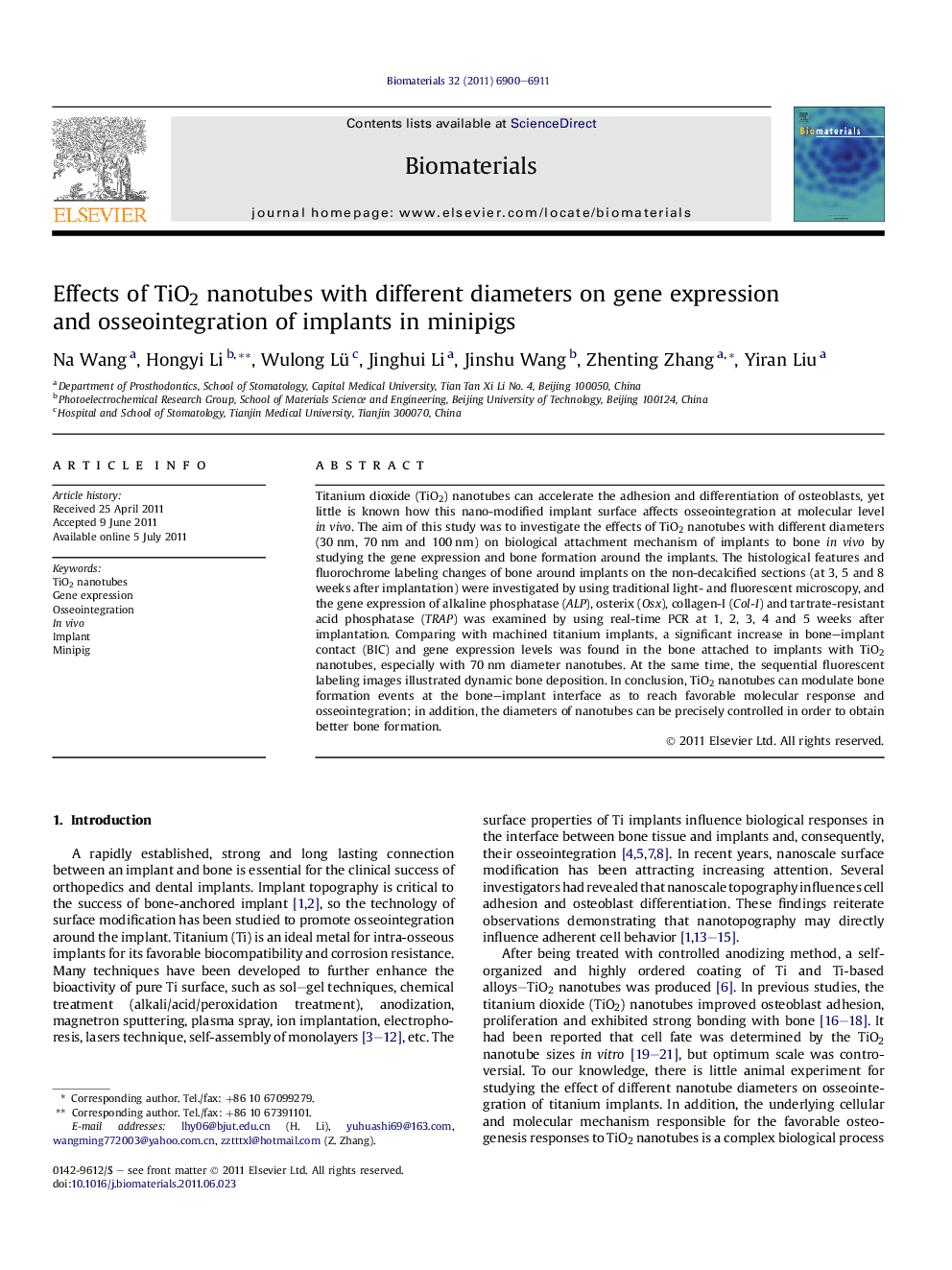| Article ID | Journal | Published Year | Pages | File Type |
|---|---|---|---|---|
| 7641 | Biomaterials | 2011 | 12 Pages |
Titanium dioxide (TiO2) nanotubes can accelerate the adhesion and differentiation of osteoblasts, yet little is known how this nano-modified implant surface affects osseointegration at molecular level in vivo. The aim of this study was to investigate the effects of TiO2 nanotubes with different diameters (30 nm, 70 nm and 100 nm) on biological attachment mechanism of implants to bone in vivo by studying the gene expression and bone formation around the implants. The histological features and fluorochrome labeling changes of bone around implants on the non-decalcified sections (at 3, 5 and 8 weeks after implantation) were investigated by using traditional light- and fluorescent microscopy, and the gene expression of alkaline phosphatase (ALP), osterix (Osx), collagen-I (Col-I) and tartrate-resistant acid phosphatase (TRAP) was examined by using real-time PCR at 1, 2, 3, 4 and 5 weeks after implantation. Comparing with machined titanium implants, a significant increase in bone–implant contact (BIC) and gene expression levels was found in the bone attached to implants with TiO2 nanotubes, especially with 70 nm diameter nanotubes. At the same time, the sequential fluorescent labeling images illustrated dynamic bone deposition. In conclusion, TiO2 nanotubes can modulate bone formation events at the bone–implant interface as to reach favorable molecular response and osseointegration; in addition, the diameters of nanotubes can be precisely controlled in order to obtain better bone formation.
